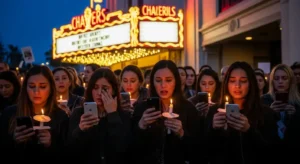In today’s digital landscape, false death reports spread faster than truth. A tweet or post saying “RIP” can gain thousands of shares before any credible source has confirmed it. For readers, families, and news platforms, this wave of misinformation creates confusion and pain. For sites like NewDeaths.com, the responsibility is clear: accuracy must always come first. This article explores why death hoaxes spread, how to spot them, and steps both readers and publishers can take to reduce harm.
Why False Death Reports Go Viral
When rumors about public figures’ deaths surface, they often spread at lightning speed. Why?

- Emotional reactions: Death is sensitive. People instinctively share news to mourn or express shock.
- Low entry barrier: Anyone can post “RIP” content without evidence.
- Confirmation bias: If someone has been ill, jailed, or in the spotlight, false reports feel “believable.”
- Slow official confirmation: Families and institutions often take hours or days to release statements.
The result is a perfect storm: sensational claims that trigger strong emotion and travel globally before fact-checkers arrive.
Red Flags of False Death Reports
Readers should stay alert to these common warning signs:
- No mainstream media coverage (AP, BBC, Reuters, CNN, etc.).
- Posts come only from unverified social media accounts.
- The same screenshot shared repeatedly without original context.
- Mismatched imagery — old photos reused or generic stock images.
- Domains mimicking news outlets (e.g., “breaking-news-today[dot]com”).
If a claim feels suspicious or lacks official reporting, wait before sharing.
How to Verify a Death Report
- Check major outlets: Search credible news sources such as Associated Press or BBC.
- Look for official statements: Review the verified accounts of the family, management team, or institution.
- Cross-reference obituaries: Funeral homes or local newspapers may publish official notices.
- Use fact-checking platforms: Snopes, Reuters Fact Check, and AFP Fact Check regularly address viral hoaxes.
- Wait for updates: If no evidence appears, consider the report unverified until proven.
Responsible Reporting for Obituary Sites
Websites that cover deaths carry an ethical responsibility. Best practices include:
- Never rush to publish: Delay until at least one reputable confirmation exists.
- Flag uncertainty: Use words like “reportedly” or “unconfirmed” until facts are clear.
- Link to original sources: Always provide references to press releases or official posts.
- Update transparently: If details change, note the update time and source.
- Archive hoaxes: Maintain a “debunked” section that educates readers on past false reports.
These practices protect credibility while respecting the families affected.
Case Study: A Celebrity Death Hoax
In recent years, countless celebrities have been falsely declared dead online — from actors to musicians. Typically, it begins with a viral tweet, followed by memes and tribute posts. News outlets remain silent until fact-checkers intervene. By the time truth surfaces, millions of people may already believe the hoax. This cycle damages reputations, confuses fans, and sometimes forces families to issue unnecessary denials.
What Readers Can Do to Stop Misinformation
- Pause before sharing: Verify with credible sources first.
- Use search tools: Look up whether fact-checkers have addressed the claim.
- Report false posts: Flag content spreading unverified information.
- Educate your circles: Comment with links to real news stories to stop hoaxes spreading further.
Impact of Misinformation on Families & Communities
 False reports are not harmless. They cause unnecessary grief, disrupt memorial planning, and can even harm ongoing medical privacy. For families mourning a loved one, battling viral rumors adds another painful burden. For communities, credibility is undermined when news sources amplify misinformation.
False reports are not harmless. They cause unnecessary grief, disrupt memorial planning, and can even harm ongoing medical privacy. For families mourning a loved one, battling viral rumors adds another painful burden. For communities, credibility is undermined when news sources amplify misinformation.
How Platforms Like NewDeaths.com Can Help
At NewDeaths.com, we believe in building trust with transparency. By teaching readers how to recognize false death reports, we can contribute to a more accurate, respectful culture of memorial reporting.
Explore more in our related articles:
- The Importance of Verified Reporting in Death Announcements
- Cultural Practices in Mourning
- Navigating Grief Support Resources for Families
External Resource: For verified updates on misinformation, visit the
Reuters Fact Check Hub.
By staying cautious, citing sources, and educating others, we can stop the spread of false death reports and ensure dignity for those who pass.
